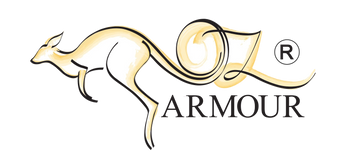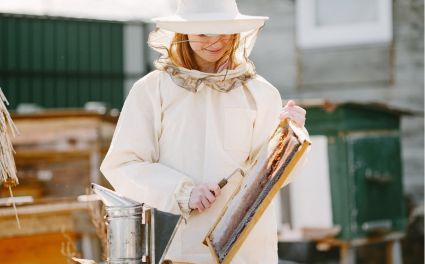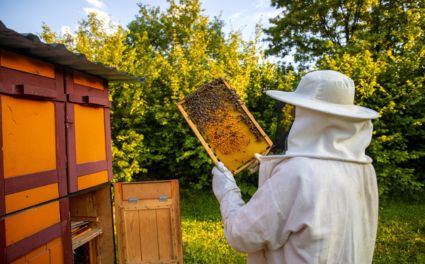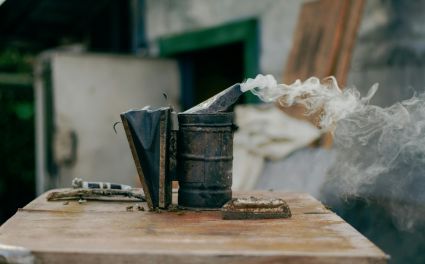As climate patterns shift and warmer weather stretches across more months, beekeepers are noticing an unmistakable change—the beekeeping season is becoming longer. While this extended activity creates new opportunities for honey production and colony expansion, it also introduces fresh challenges that require skill, observation, and consistent hive care.
A longer active season means bees are flying sooner, foraging later in the year, and encountering evolving environmental stressors. To navigate these changes, beekeepers must use smart management strategies and rely on trusted tools, including protective essentials like beekeeping Jackets designed to bring comfort and safety during extended hive work.
🌼 Why Longer Seasons Affect Hive Dynamics
Extended warm periods may at first seem like a blessing—more blooms, more foraging, and more honey. But in reality, longer seasons also mean:
-
Longer periods of brood rearing
-
Higher pest pressure
-
Increased food consumption
-
Greater exposure to heat stress
-
More opportunities for diseases to spread
These changes make it essential for beekeepers to monitor colonies closely, ensuring bees have what they need to stay balanced and healthy throughout the extended season.

🔍 Late-Summer Hive Management: A Key Survival Stage
Late summer is the turning point. Nectar flows decline, heat peaks, and pests surge—all while colonies are still actively raising brood. This moment requires careful attention.⭐ Monitor Population Strength
A thriving colony shows dense brood patterns, steady foraging, and healthy queen activity. During inspections, wearing breathable beekeeping Suits reduces sting risk and keeps you cool in warm weather.
Look for:
-
Eggs, larvae, and capped brood
-
Adequate pollen and honey stores
-
Healthy, active workers
-
Calm queenright behavior
If you see gaps in brood, dwindling worker numbers, or sluggish activity, it’s time to intervene.
⭐ Strengthen Food Stores
As the season lengthens, bees may consume resources faster than nature replenishes them. Provide:
-
1:1 sugar syrup
-
Pollen patties during drought
-
Access to clean water sources
Use a reliable feeder from the Beekeeping Equipments category to ensure controlled feeding and minimal robbing.
🐝 Managing Heat: Hot Weather Beekeeping
High heat can threaten brood viability, melt comb, and intensify dehydration.
⭐ Improve Ventilation
Proper airflow prevents overheating and reduces moisture buildup. Keep hives ventilated with:
-
Screened bottom boards
-
Upper entrances
-
Ventilated roofs
-
Slanted hive covers
Cool, breathable gear like beekeeping trousers makes working in hot weather more comfortable.⭐ Support Bee Hydration
Bees need water for brood food, cooling, and honey processing. Provide:
-
Shallow water trays with pebbles
-
Continuous clean water near the hive
-
Shaded placement of water sources
Hydration is a simple but critical component of late-summer care.
🐞 Pests and Diseases Rise With Longer Seasons
Extended warmth means pests stay active longer, multiply faster, and cause more damage.
Varroa Mites
Inspect brood frames regularly. Use powdered sugar rolls, screened bottom boards, and rotate treatments to prevent resistance.
Small Hive Beetles
Late-season beetles multiply quickly and can slime a hive. Use oil trays, traps, and reduce hive space if colonies shrink.
Wearing durable beekeeping gloves keeps your hands safe during deep inspections.
🌻 Late-Season Honey Production: Golden Opportunity
Extended seasons often allow bees to gather nectar from late blooms such as:
-
Goldenrod
-
Asters
-
Late clover
-
Wild sunflowers
To support late honey production:
-
Keep supers accessible
-
Maintain comb quality
-
Avoid overharvesting
-
Ensure bees have plenty left for winter
For safe harvesting, breathable beekeeping veils keep your face protected while maintaining excellent visibility.
🧪 Signs of a Thriving Colony
Use this checklist as your late-season health indicator:
-
Consistent brood pattern
-
Strong foraging traffic
-
Steady pollen intake
-
Adequate honey storage
-
Balanced population
-
Clean, well-maintained comb
Protective gear such as beekeeping kids suits ensures safe involvement for young helpers during hive checks.
💧 Bee Hydration Strategies for Extended Seasons
As seasons grow longer, water needs increase.
Practical hydration support:
-
Place feeders near shade
-
Refill water containers daily
-
Maintain multiple water points
-
Prevent drowning with floating corks
Comfortable beekeeping ankle protection helps prevent bees from entering footwear during summer inspections.
🎒 Gear Matters: Why Beekeepers Trust OZ Armour
Extended seasons mean more hive checks, more inspections, more heat—and more chances for stings. That’s why high-quality protective gear is essential.
OZ Armour continues to be a dependable choice for beekeepers because their gear delivers:
-
Ventilation (perfect for hot summer inspections)
-
Durability (long-lasting, tear-resistant materials)
-
Comfort during extended beekeeping sessions
-
Safety through strong sting protection
Bright, comfortable pink bee Suits offer visibility and style—loved by many beekeepers in warm climates.
📘 Keep Learning: Knowledge Makes Stronger Bees
A longer season means more learning opportunities. Stay updated through
read more blogs about beekeeping and continue to expand your skills.
You can also visit
Learn Beekeeping
to deepen your understanding of seasonal hive care and bee behavior.

🌿 Conclusion: Thriving in an Extended Beekeeping Season
As seasons lengthen, the rhythm of beekeeping shifts. More heat, more pests, more brood, more work—but also more honey and more chances to grow your skills.
By prioritizing:
-
Ventilation
-
Hydration
-
Pest management
-
Comb care
-
Smart feeding
-
Hive monitoring
…and equipping yourself with trusted protective essentials like OZ Armour products, you ensure your colonies remain stable, safe, and productive throughout extended warm seasons.
Beekeeping is evolving—and with the right strategies, tools, and knowledge, you’ll evolve right along with it.




